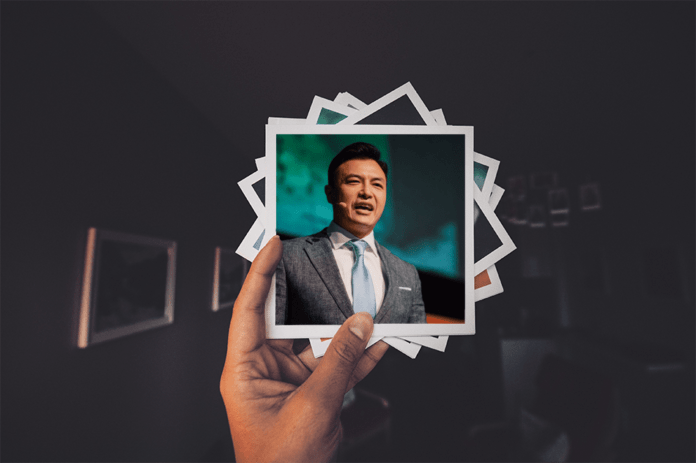In the fourth in a collection of interviews with innovative entrepreneurs and thought leaders to be published throughout the year, here WhichPLM discusses the Internet of Things, machine learning and data with Founder & CEO of Amyx+, Scott Amyx. Having won numerous awards, Scott shares his cross-industry career span with WhichPLM. Amyx+ is an award-winning Internet of Things business transformation consultancy.
- Name: Scott Amyx
- Occupation:Founder & CEO, Amyx+
- Likes: Curiosity, creativity, agility of the mind, perseverance; family, travel, plant-based diet, organic foods, books and good stories
- Dislikes: Rigidity/ inflexibility, obstinance, hubris; packing, airports, middle aisle seats
- Words to live by: “Go confidently in the direction of your dreams! Live the life you’ve imagined.” – Henry David Thoreau
WhichPLM: Scott, you’re the Founder & CEO of Amyx+, an ‘award-winning Internet of Things strategy and innovation lab’, and winner of the Cloud & DevOps World 2016 Award for Most Innovative Vendor, amongst other prestigious titles. Before we get started, could you tell us a little bit about yourself, and how you came into the world of the Internet of Things and wearable tech. consultancy?
Scott Amyx: Absolutely. The best way to characterize my background is, if you look at career span, it’s really been focused on strategy and consultancy (I started my career with Price Waterhouse Coopers); then I went into technology on the product management side, and my last corporate role was VP of Product Management, which was acquired by Fiserv (FIS). There, I had the opportunity to transition into that larger firm in a GM capacity but I chose to leave and explore options on my own.
The entrepreneurial activities over the last several years initially started out with mobile, but in the last couple of years or so we’ve really focused our agency on the Internet of Things, and that’s Amyx McKinsey – recently we branded as Amyx+. And what that boutique agency does is focus on strategy formulation, and connects the dots to the execution. So what makes us interesting is that we’re kind of a hybrid between a McKinsey and a Deloitte, but with a specific focus on IoT only. More importantly, we’ve recently acquired an engineering company to further deepen our depth in terms of implementation around things like blockchain, artificial intelligence, machine learning, decentralized, distributed computing, and security and privacy. So, again, we straddle both the strategy but store that process to the actual implementation of the process.
WhichPLM: And that’s cross industry?
Scott Amyx: Yes it’s cross-cutting; our clients range from manufacturers, luxury, oil & gas, utilities, CPGs to governments.
But we also get into some hard IoT things as well: security, decentralized computing, networking, overlay networks – we cover the whole gamut, but our key focus is really on the data analytics and, in particular, the predictive and prescriptive data analytics.
WhichPLM: We’ll get onto data shortly. As a business operating in the world of IoT, how would you define the IoT at the highest level?
Scott Amyx: The simplest definition is that the IoT is taking inanimate objects, which is 99% of the things around us, even down to the environment or the topsoil, and allowing for sensory capability to be added to them, allowing us to understand that inanimate object as well as the environment that it’s in. What’s exciting about that is that things are starting to become awakened, they start to have abilities – whether it’s a building or subway infrastructure – gain senses: eyes through camera networks and facial recognition, ears through voice analysis and natural language processing, the ability to speak as you’re seeing with Viv and IBM Watson, to synthesise speech, and the ability to sense their environment: thermal sensors etc. With these senses, these things can then contribute to a neural network or a sensory network and start to give us information.
So, in the highest form, if you imagine the earth and our world on this planet – things becoming so awakened and connected that we can know in an instant what’s happening in the most remote parts of a particular island, for example. It gives us a lot of quantification. In terms of concentric circles, we typically start with the wearables that represents on our bodies, inside our bodies or near our bodies; the next concentric circle are the things that are personal to most of us – connected homes, connected cars, connected work environments; the last thing is the industrial and public spaces, including cities.
WhichPLM: This is interesting because a lot of people’s understanding of the IoT tends to stop at the smart device level. Of course, a huge amount of ‘things’ have the capacity to generate data, because organically it’s become simpler and cheaper to add embedded systems to things (what you call awakening things), but people tend to limit their understanding to the things that are able to generate data but also to act upon it. So, smart home automation, smartphones and things like that. But, a huge amount of things within the Internet of Things aren’t smart in and of themselves, as you’ve said.
Scott Amyx: That’s a good point. There are a lot of implications. Take the example of the smart city again; depending on what kind of implementation you have arranged between the latency requirements, the energy requirements, and if it’s a true M2M node sometimes it doesn’t even have capacity to house a small, simple OS.
There’s a broad spectrum of things between standard M2M and higher end devices that ship with a full-on microprocessor and an operating system. On the fashion side, you have the recent announcement of FitBit acquiring Coin. Credit cards have an RFID chip and the tokenisation and the security aspect can be externalised and then integrated into any wearable device or any piece of clothing, theoretically. What that means is that this could be integrated into a sleeve, and when its time to make a payment you’ll use a point of sale system without even having to pull out your phone. We’re starting to see a lot of use cases where it becomes more practical: multipurpose tools like smartphones, some of the features can be integrated into fashion and clothing.
A lot of the use cases for smart garments are fairly limited, but we think the usage is actually much higher; we like to get down to the e-textile level, that allows us to focus not just on fashion, but get into carpets, wallpapers and paints. Then all of a sudden, things like hospitals and seats on buses and trains become fairly ubiquitous. All of these things can be connected; eventually the walls and floors of private and public spaces can listen in and be able to assess presence and weight, movement, acoustics, heat and so on.
WhichPLM: What you’re talking about is generating a tremendous amount of data; whether or not it’s being actively listened to at any time, if we’re at the stage where carpets and wall coverings are able to sense that kind of geo-spatial information and, presumably, relaying that to some centralized processing that’s applying algorithmical logic or machine learning to make sense of it, the question for businesses becomes where to find the value in that much information? If a brand can conceivably be able to generate a huge amount of information about their product – in the supply chain, in disposal, in interacting with consumers – how would they make that manageable as a business? In the short term, in your experience, how do people approach that now?
Scott Amyx: A lot of what I’ve been talking about is in the present; I’m discussing what we’re actively developing.
One area is that we’ve built some proprietary technologies called human data analytics. What that means is that we’re able to collect the accessory information from everything – your mobile phones, PCs, the Internet of Things, and wearables – signal process it, and apply various techniques and insights around people. That is specifically to return ROI for brands, and that could be in advertising, marketing, or retail and hospitality customer service. In other words, we’re able to ascertain systematically people’s emotion. So if I’m in a retail store at a concert, or interacting at a café or restaurant, how am I feeling about that service? How am I feeling in a messaging application, for instance? The second part to that is the cognition piece – how am I thinking?, how am I understanding? – and translating that into long-term memory. We’re able to assess how focused they are; some of these technologies originated from military use. Then the third piece is the behaviour – how they are behaving, what’s the body language? And lastly, the context, meaning: what’s the attribution? What’s causing them to smile? What’s causing them to be distracted or confused? Understanding that context.
The value we can provide for brands – and these things are in pilots right now – is that whether you’re a retail store or a brand owner, you can start to understand what’s happening in your different channels.
We can gauge responses to marketing campaigns from messaging platforms, then once they arrive at the store, providing they opt in, how they’re moving, what they’re looking at, and even gauging emotional reactions from facial recognition technology. Once we know there’s a strong interest, we can even work with a CRM to push offers to help influence real-time decisions. Once they make purchased, it’s very common these days to do surveys after a transaction. Here we can do real-time customer surveys without the surveys, and we try to do as much of it as possible without new devices; we do it with smartphones and wearables and other environmental sensors.
These are some of the ways we’re able to add real value. Ultimately, in the case of advertising, people don’t actually mind receiving advertising. What annoys them is when things are being sent to them that are irrelevant – no use or value to them at that point. But when it is relevant, timely, and there’s a sense of urgency, you have a high conversion rate.
WhichPLM: Is that true across generations? Some people seem to think a younger generation is much more perceptive to proactive, personalised advertising than an older generation is. In your experience is it age agnostic?
Scott Amyx: Relevancy is somewhat universal, across gender, political economic and the age aspect. I think something else that comes up is around privacy and the level of comfort. The former is fairly universal; the latter not so much. People’s attitudes to privacy are geo-specific, the capture, collection and distribution of personal information is very tightly regulated, and older people tend to have a heightened sensitivity around this topic.
With this being said, for the most part they talk the talk. I think the average age of people on Facebook is between the 50s and 60s now, because younger people have moved over to Snapchat and Whatsapp. So they are giving away data, and aren’t completely blind to it.
Generally, the research says that it depends on the persona and the segments that we’re talking about, but the perception of the value that they receive can composite, to some extent, the data that they share.
One of the areas that we’re actively developing for clients is around privacy. There are different types of technologies around privacy, including privacy data bolts, different ways of encrypting, different models and so forth. With decentralized distributed computing a lot of the personal data and the IoT-generated data, in the future, are going to reside locally on the edge, and not necessarily aggregated at cloud level. There are a lot of things happening, but I think for privacy purposes, it’s really going to be driven by regulatory framework first.
WhichPLM: How much of that heightened knowledge of consumer personas is contingent on machine learning? Is machine learning a necessity to get the full value from a proper IoT strategy?
Scott Amyx: It depends on what the objectives are. An important thing for us all to recognise is the analogy of a helium balloon. The IoT is like the balloon, in the sense it’s getting bigger and bigger; it’s getting bigger but the fundamental thing inside that balloon is still helium. In other words, the data type hasn’t necessarily increased per sé. You don’t need AI and machine learning per sé if your objective is to understand historical information and use more of a data mining approach. Where it does come into being helpful is when we approach analytics that are predictive, holistic. It’s also helpful if you’re trying to anonymise and get cluster data; if you’re a brand, you may not be interested in individual data personas in the same way a retailer would be, but you might be interested in cluster data as it relates to your customer base: how does cluster A respond to certain events versus cluster B? That’s one of several key ways to get around the privacy aspect: you’re not targeting an individual, you’re building a profile of a segment.
WhichPLM: The last thing we wanted to discuss quickly is augmented reality. You mentioned earlier about awakening inanimate objects. There’s likely to be some applications for augmented reality in that way, and we’ve seen some in the manufacturing space. Have you explored consumer applications for the same thing?
Scott Amyx: Yes, we partner with Super Ventures; we partner with the augmented reality OBYD platform that brings in AR/VR capabilities; and with DAQRI for hard hats in the construction and steel manufacturing space. We’re pretty active in that space.
Coming back to the fashion space, we find that a lot of these are used for advertising, and in a sense ‘gimmicky’, ways. Some of the ways we’re going to start to see this a little more will be in a social context – how we interact with brands, and deal with fashion. If you think about Cisco telecommunication combined with Microsoft Hololens, what you get is the ability to have a physical tele-presence. When you put on the VR and ‘walk around’ you’ve recreated a physical presence. The there’s also e-sports, which is essentially watching sports together virtually.
WhichPLM: Thanks Scott. We’ll give you one last opportunity to cover anything we haven’t already…
Scott Amyx: Thanks. I just wanted to finish by saying that when it comes to clothing, a lot of the capabilities that we find in a wallet, in our phone will start to come into the clothing itself. What’s the look back? When you leave the house, what are the things that you consider essential? Your keys, your wallet, your phone for example. Those are the kinds of capabilities we want to start building into clothing.
Originally published on WhichPLM on April 25, 2017. Author Lydia Hanson.


















